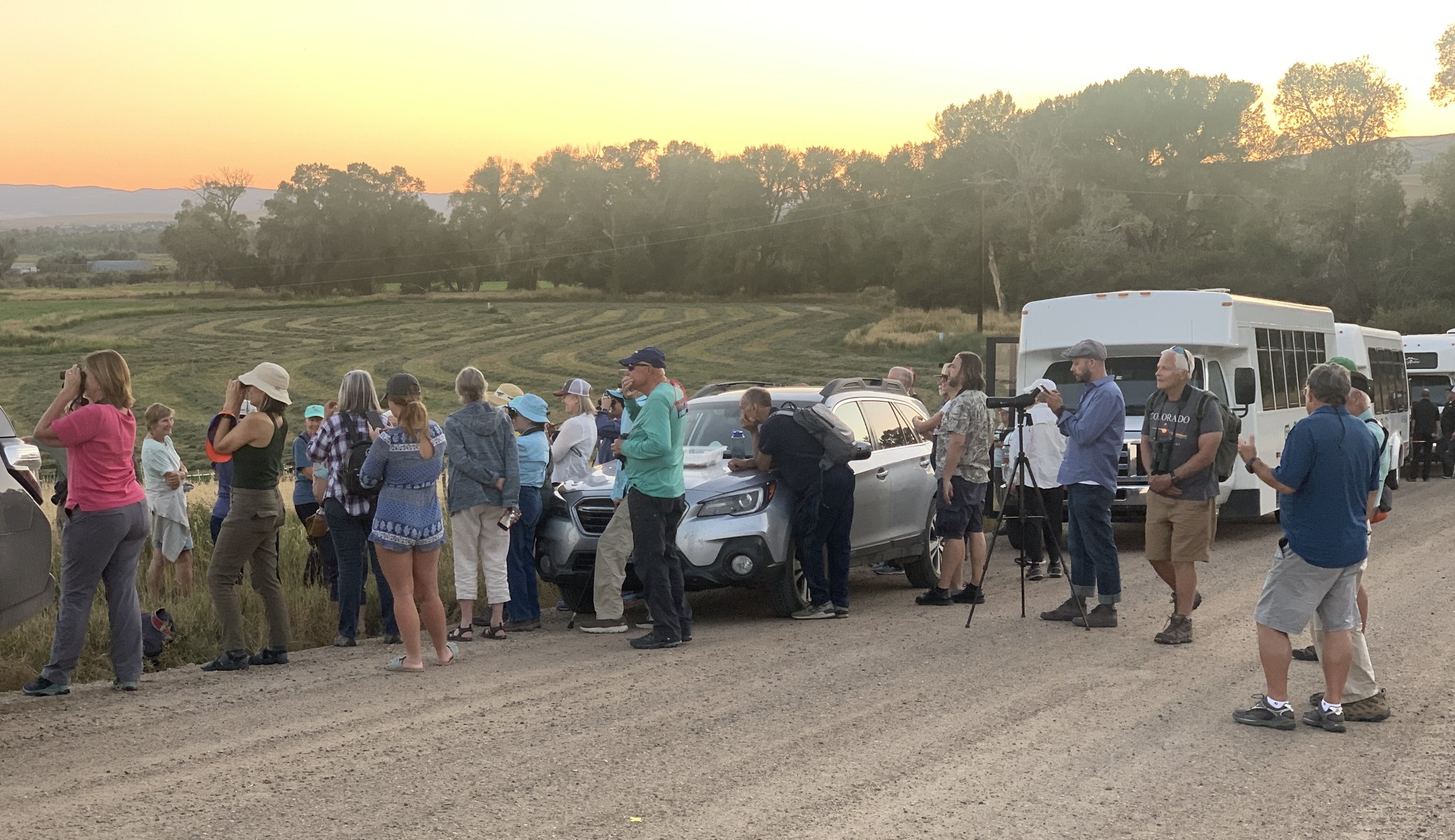Naturally
The woolly bear caterpillar watch has begun. Folklore says if its rusty band is wide, it will be a mild winter. The more black there is, the more severe the winter. Most scientists discount woolly bear predictions.
Red leaves are on the sumac and goldenrods have become insect zoos. Some blue jays have become bald because of a molt. I watched someone bale hay. I’ve never baled hay just to listen to the meadowlarks, but it would have been worth it. Hummingbirds worked around the bees at feeders.
I marveled at the persistent beauty of black-eyed Susans and spotted bee balm (horsemint). Soldier beetles gather on this bee balm, which is drought tolerant. Soldier beetles, sometimes called leatherwings, are relatives of fireflies and a soldier beetle’s larvae look like tiny alligators.
There was the first record of a swallow-tailed kite at Hawk Ridge in Duluth. A Mississippi kite was also seen there. A Mississippi kite’s nest may be located next to or contain a wasp nest, which might help protect the chicks against climbing predators. Other bird species—mockingbirds, blue jays and house sparrows—may nest near or on kite nests, coexisting peacefully with the kites.
Q&A
“How far north do Baltimore orioles nest?” They breed from Louisiana through central Canada.
“I’ve noticed that the cardinals are the last to leave the feeders at the end of the day. Do you know why?” Cardinals are among the earliest visitors in the morning and the last to leave the feeders at dusk. Why they like the day’s edges is a good question. They might feel safer then as Cooper’s hawks aren’t active at either dawn or dusk. Maybe they don’t like crowds or the feeder offers specials then. The male's bright plumage appears dark in the dim light of dusk. This makes him a bit more inconspicuous. Cardinals often live close to feeders, which means they have a short commute home and face less competition at the feeders at dusk.
“Do squirrels ever fall out of trees?” Gravity can occasionally overpower one, especially when aided by a squirrel’s injury or illness. I came out of a church in Iowa just in time for a squirrel to fall to the ground nearby from a tall tree. It bounced and ran away, appearing to have been unharmed. Its misstep might have been caused by another squirrel chasing it.
“Why do ruffed grouse drum in the fall?” For a while, the spring and the fall daylight are about the same. Perhaps the grouse are tricked by the photoperiod and that triggers their drumming. Or maybe they drum in the autumn to ward off potential competitors for their territory.
“Why do our oaks produce so many acorns one year and so few another?” Bur oaks are white oak trees (leaves have rounded lobes) and have a fruiting cycle analogous to an apple tree. Every spring, blooming female oak flowers are fertilized by the pollen from male flowers growing on the same tree or nearby trees of the same species. If conditions are favorable, the female flowers set acorns, which mature over the summer and drop in the fall. Red oak trees (the lobes of their leaves are pointed) develop acorns the same way white oaks do, but the nuts remain stunted woody knobs into the following spring. In their second spring, these acorns begin growing again and drop as mature acorns in the fall. Although red oak trees require two years to produce an acorn crop, but could produce a crop of acorns every year as long as the conditions for fruit-set are favorable. This is because of the different fruiting schedules of individual trees. An oak tree's health, vitality, genetics, age and resources can affect acorn numbers. A late spring frost can blight flowers, which prevents acorn development. Drought, flood and insects play important roles. Oaks have irregular cycles of boom and bust. Boom times, called “mast years,” occur every few years. A mast year isn’t a predictor of a severe winter. Oak trees might practice “predator satiation.” In a mast year, predators (chipmunks, squirrels, turkeys, blue jays, deer, bears, etc.) can’t eat all the acorns, so some germinate. Years of lean acorn production keep predator populations low, meaning there are fewer animals to eat the acorns in a mast year.
“When are young opossums independent?” Opossums that are at least 7 inches long, not counting the tail, are old enough to survive on their own.
Thanks for stopping by
“If an animal does something, we call it instinct; if we do the same thing for the same reason, we call it intelligence.”—Will Cuppy.
“Any intelligent fool can make things bigger and more complex. It takes a touch of genius and a lot of courage to move in the opposite direction.”—E. F. Schumacher.
Do good.
©Al Batt 2022
Spotted bee balm (horsemint) tolerates dry conditions and amorous soldier beetles. Photo by Al Batt.
It was my great pleasure to ingest a crane cookie at the Yampa Valley Crane Festival in Steamboat Springs, Colorado. The Festival was a delight.
Craniacs at the Yampa Valley Crane Festival doing what craniacs do—look at cranes.
Craniacs at the Yampa Valley Crane Festival doing what craniacs do—look at cranes.
A great place to stay in Steamboat Springs, Colorado.
A great place to stay in Steamboat Springs, Colorado.
Where to find books, scones and friends in Steamboat Springs, Colorado. And coffee, if you’re into that sort of thing.
More craniacs at the Yampa Valley Crane Festival.
At Rotary Park in Steamboat Springs, Colorado.










